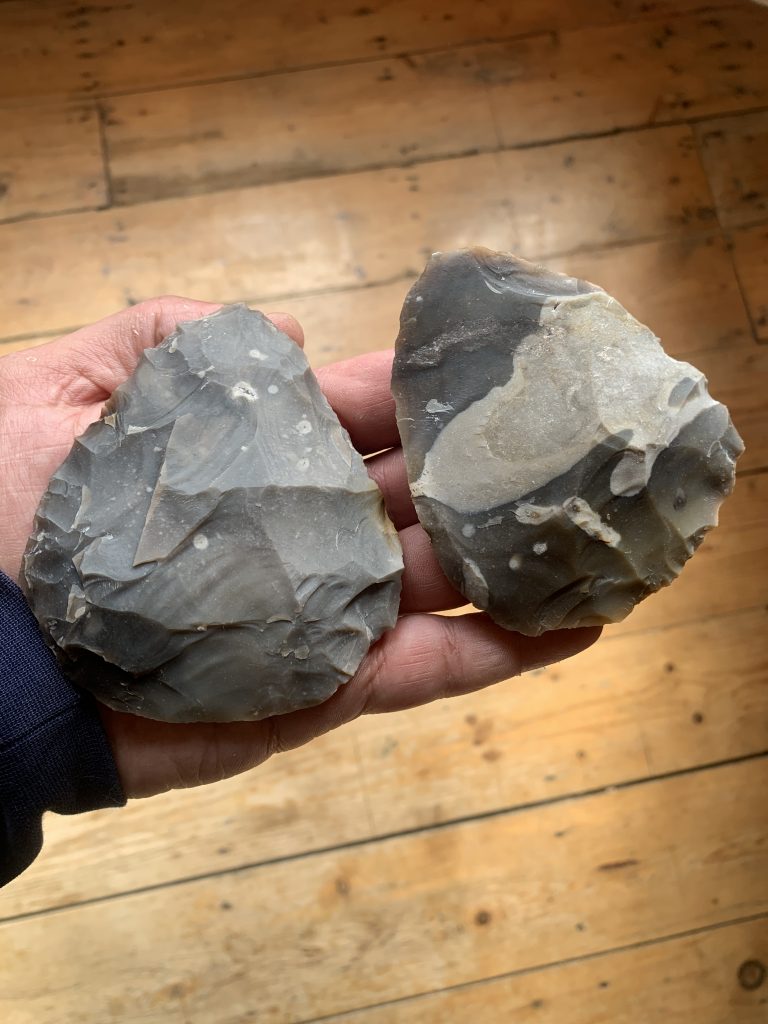
I have been making quite a few handaxes recently, but only just detected that I have a style. It occured to me when I saw these two next to each other and recognised how similar they are. Shape and size was an obvious similarity, and so these two can be recognised as the same ‘type’, and that would be cordate, or heart shaped.

However, it is the process, or ‘technology’ that is the real connector and this relates to how I get my initial flakes. We have very large and chalky nodules, as discussed here and these nodules need breaking down into flakes in order to make a handaxe. Flakes have a thick, bulbar ‘proximal’ end, and a thin and sharp ‘distal’ edge at the other. Intuitively, I seem to make my handaxes with a heavily thinned bulbar section on one side, and a minimally thinned distal edge on the other. This method has developed unconsciously, and I have only became aware of it with these two, and then looking at earlier examples.
In the above video you can first of all see the minimally worked ‘distal’ edge, then the more intensively worked bulbar section, and finally the ripples of percussion indicating this was originally the ventral face of the flake. I’m not sure why my body chooses to work the flakes in this way. I will have to make some more handaxes to find out!
Leave a Reply